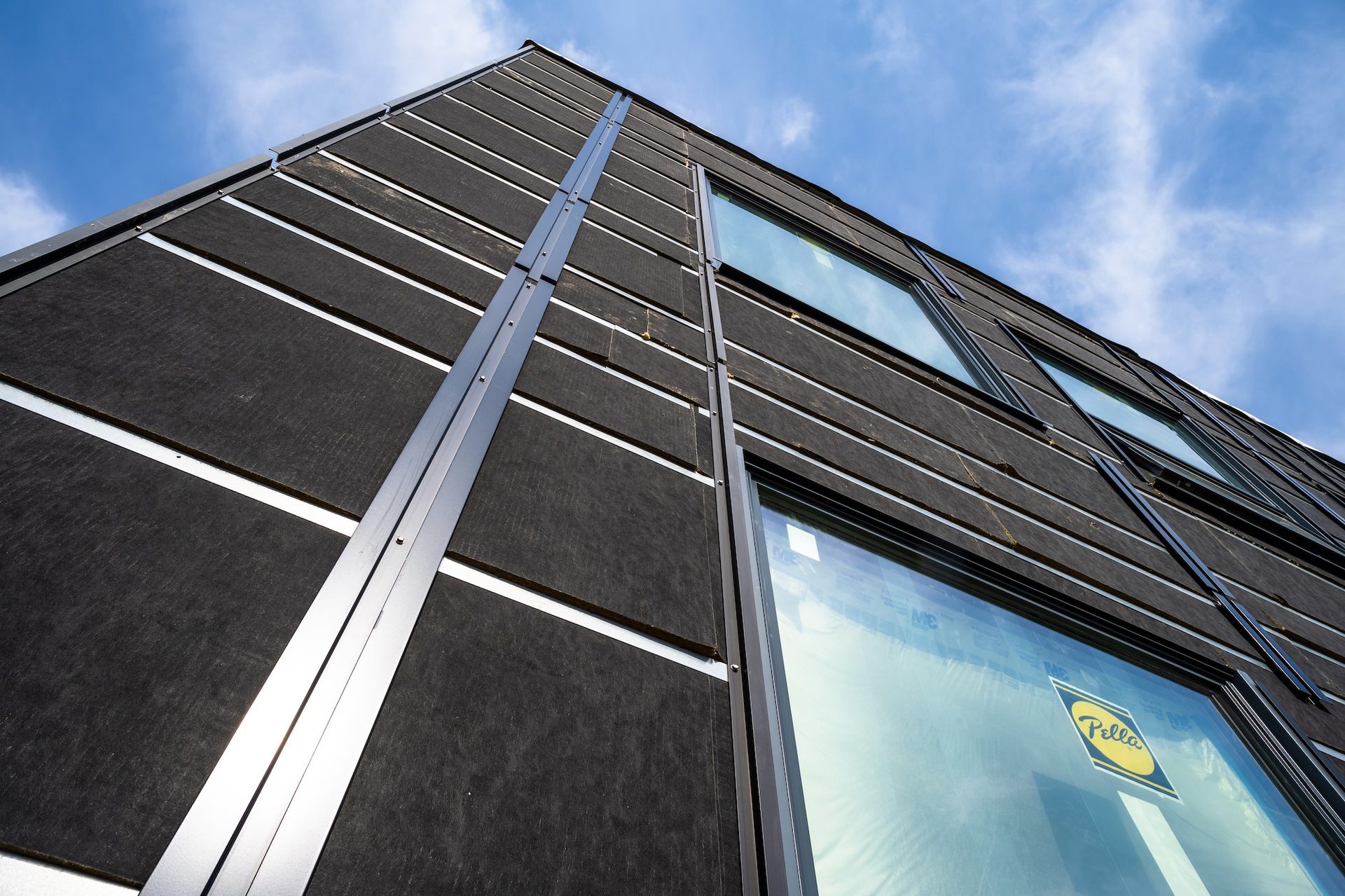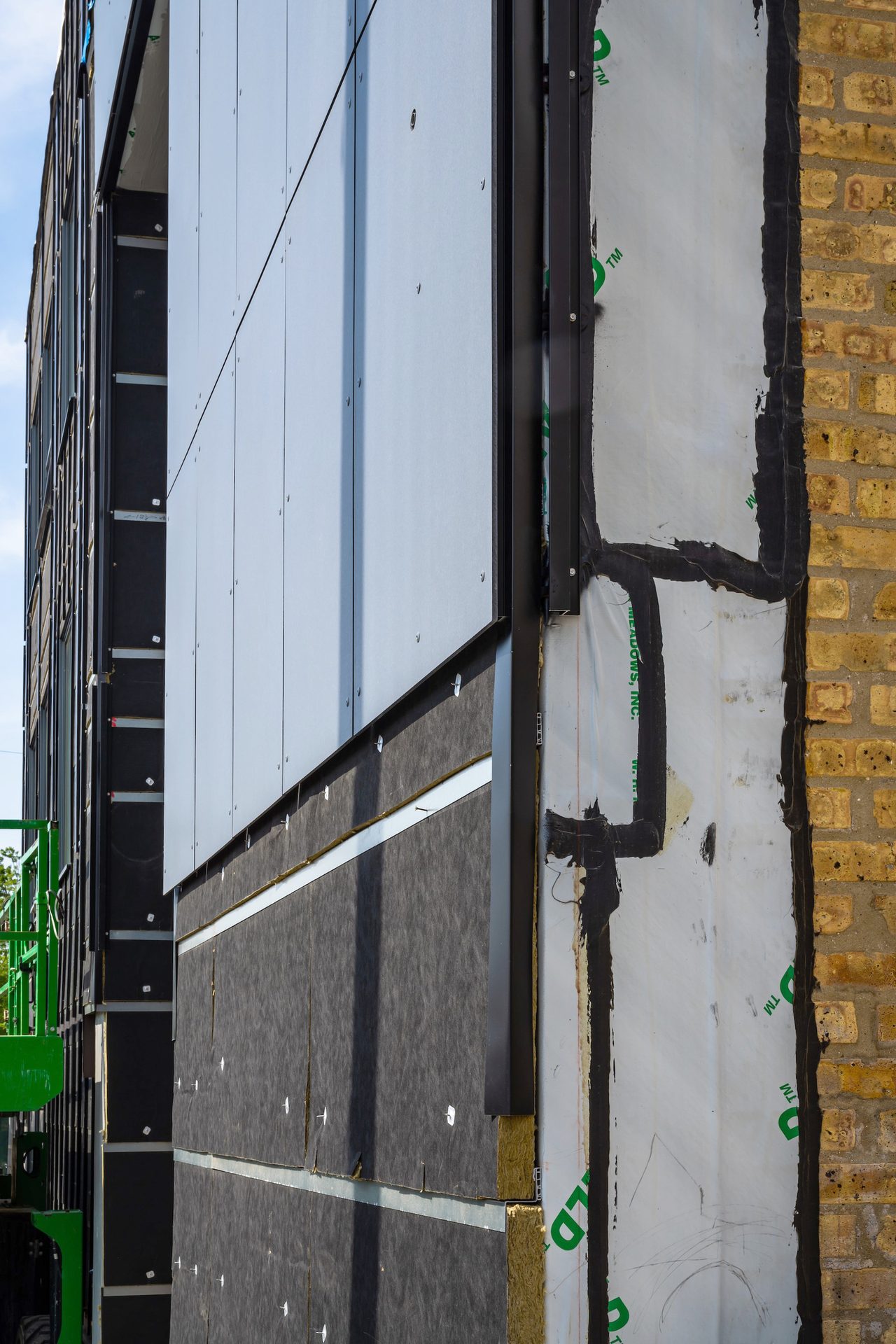Once considered unconventional, rainscreen systems are now formally recognized in the International Building Code—marking a pivotal moment for resilient, energy-efficient building design. By Brian Nelson
Rainscreens
Come of Age in North America
xxxxxxxxxxxxxxx By xxxxxxxx
h2 - xxxx
h3 - xxxx
H1 headline
Over the past decade, the rise of rainscreen wall assemblies has significantly advanced building design and performance. This progress shouldn't come as a surprise. Rainscreen wall assemblies offer numerous benefits, such as improved water management and better insulative abilities, which help reduce energy consumption. Additionally, they provide exciting and stimulating design possibilities with a wide range of cladding options. Rainscreens have truly pushed the building’s envelope.
Rainscreens and the International Building Code
With the increasing popularity of rainscreens, it's no wonder the industry has established the Rainscreen Association in North America. Despite being relatively new, RAiNA has already achieved several milestones, such as incorporating a formal definition of rainscreen into the 2024 edition of the International Building Code:
Rainscreen System: An assembly applied to the exterior side of an exterior wall and consisting of, at minimum, an outer layer, an inner layer and a cavity between them sufficient for the passive removal of liquid water and water vapor.
Furthermore, the incorporation of the defined term can be found listed explicitly within the definition of “exterior wall covering.” Why is all of this important? Well, exterior wall covering is also an explicitly listed component/part/piece of an exterior wall assembly—all found within Chapter 2 of the IBC.
Still not connecting the dots or seeing the importance of all this code talk?
Well, since rainscreen systems are specifically a type of exterior wall covering (per the IBC) and exterior wall coverings are explicitly a part of an exterior wall assembly, this means the IBC formally recognizes rainscreen systems as part of an exterior wall assembly. Thus, anywhere within the IBC that charges the exterior wall assembly with a requirement, rainscreen systems are included.
Please note: “exterior wall assembly” and “exterior wall” are two different terms, so it’s easy to confuse the terms.
While the new definition of rainscreens in the IBC doesn’t drastically change code compliance for rainscreen systems, it does highlight their importance and solidify their status as a legitimate standard building practice. This codification also underscores the industry’s commitment to diligent and sound design in rainscreen systems.
I remember, about 15 years ago, discussing the rainscreen principle with designers and seeing their shocked reactions to open joint panel systems. The idea that it’s acceptable for water to bypass the cladding, as long as the air cavity can drain and dry, was quite “out of the box” then. Now, it’s a widely accepted practice. This evolution highlights how far we've come in embracing innovative building techniques.

A New Jersey office designed by Gensler, featuring a NanaWall HSW60 single-track system | Photography by Garrett Rowland Photography

The office of an Omaha financial institution designed by Alley Poyner Macchietto Architecture, featuring a Generation 4 acoustical, folding glass wall system.
Diligent Design
As we move through the design process, there are several important considerations to keep in mind. These include drainage and ventilation, penetrations through the air/water control layers, and thermal performance, among others. However, the two most critical aspects to prioritize are the structural integrity of the design and the issues of combustibility and flame propagation.
This concept isn't new, and the addition of rainscreen systems to the IBC hasn’t introduced any new fire or structural integrity requirements. However, the code has enhanced the visibility of these requirements. Chapter 14, which covers exterior walls, outlines these requirements.
New in the 2024 edition of the IBC/Exterior Wall Coverings, rainscreen systems are now explicitly referenced to be designed and constructed to safely resist the superimposed loads required by Chapter 16 (Structural Design). While this isn't a new requirement—it’s been required for several code cycles—explicitly mentioning exterior wall coverings emphasizes the importance of not overlooking the structural integrity of rainscreen systems, among other elements.
When we delve deeper into the elements of a rainscreen system, we need to consider both the cladding and the framing system that supports it. These components must be designed to withstand wind loads, dead loads, and other loads specific to their geographical location. Design can include engineering analysis, testing or some combination of the two, which is the most common approach.
It’s worth noting that this design work isn't always done by the designer of record; it is frequently delegated to contractors and/or manufacturers. Regardless of who handles the design, diligent design practices are crucial for the continued success of rainscreen systems.
With progress inevitably come challenges. We learn valuable lessons through trials and tribulations, but by embracing continuous improvement and maintaining our diligence, we can persevere. There are abundant opportunities to continue building resilient, sustainable, and high-performing rainscreen systems for years to come. However, we must always remember that due diligence is essential. Engage with your manufacturers and installers—they are experts who understand the limitations, capabilities, and what is truly constructible. Pushing the envelope isn’t always easy, but with their expertise, we will continue to succeed.
Images courtesy of Knight Wall Systems.
Brian Nelson is director of sales, Engineering & Marketing at Knight Wall Systems Inc. A 15-year veteran of the building envelope industry, he is named in several patents and developed some of Knight’s flagship products, some of which were winners of Building Green “Top-10 Green Building Product” awards. He holds a bachelor’s degree in engineering from Oregon State University.
